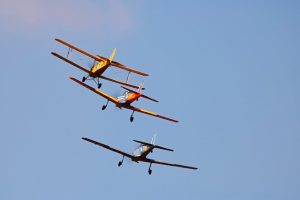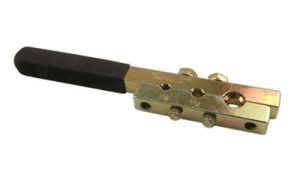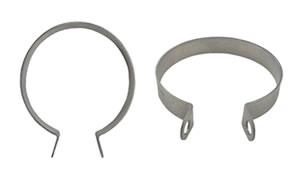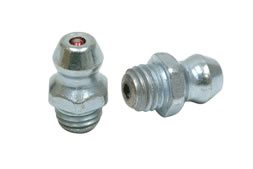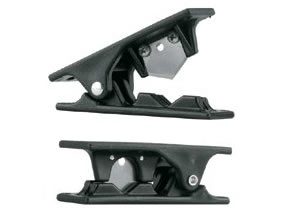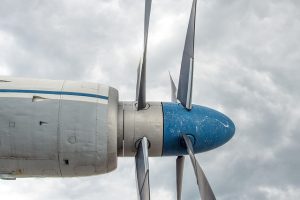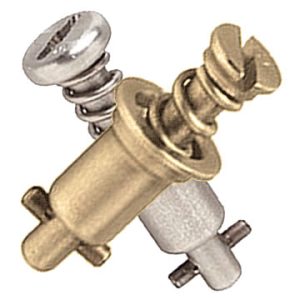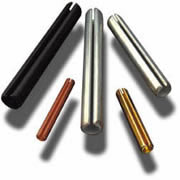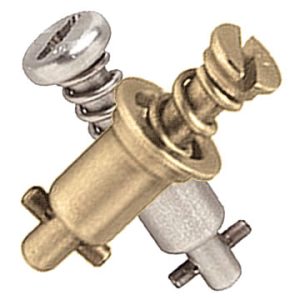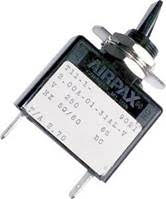
When researching the different types of lifting devices found on airplane wings, you may come across Kreuger flaps. They are commonly found on large commercial jets, such as the Boeing 707 and 747. Like all lifting devices, Kreuger flaps generate lift during flight. They feature a unique design, however, that distinguishes them from other types of lifting devices.
What Are Krueger Flaps?
Kreuger flaps are lifting devices that are installed on the leading edge of the wings. They were invented in 1943 by Werner Kruger. During the early years of aviation, Krueger flaps were added to airplanes to prevent wing stall. Today, many commercial jets continue to use them.
There are different types of Krueger flaps, but most of them consist of a hinged section of the leading edge of the wing. Krueger flaps can be extended forward and down. When the pilot activates the Krueger flaps, the hinged section will move down. This will increase the wing’s curvature, which in turn increases the amount of air flowing over the top of the wing and generates additional lift.
How Krueger Flaps Work
Krueger flaps work by increasing the camber or curvature of the wing’s surface, which generates additional lift. They are commonly used during takeoffs and landings. Upon reaching cruising altitude, most airplanes will be flying fast enough that they don’t require the use of Krueger flaps. For takeoffs and landings, though, airplanes rely on Kreuger flaps to generate sufficient lift.
The pilot may activate the airplane’s Krueger flaps during takeoffs and landings. Doing so will allow the airplane to generate more lift at low speeds and when the angle of attack is high. By increasing the airplane’s lift, Krueger flaps can help reduce the speed at which an aircraft must take off or land, which can be beneficial for aircraft operating from short runways or in adverse weather conditions
Downsides to Krueger Flaps
While they can prove useful during takeoffs and landings, Krueger flaps have some downsides. They will typically increase drag and decrease the maximum speed of the aircraft when activated. These effects, in turn, can reduce fuel efficiency.
Krueger flaps are more vulnerable to damage from debris or bird strikes than other types of high-lift devices. Airplanes that use Krueger flaps typically require more maintenance as a result.
In Conclusion
If you look at the front, leading edge of an airplane’s wings, you may notice Krueger flaps on them. They are high-lift devices that increase the wing curvature, thereby allowing the airplane to generate more lift.
- SEO Powered Content & PR Distribution. Get Amplified Today.
- Platoblockchain. Web3 Metaverse Intelligence. Knowledge Amplified. Access Here.
- Minting the Future w Adryenn Ashley. Access Here.
- Source: https://monroeaerospace.com/blog/what-are-krueger-flaps-and-how-do-they-work/
- :is
- 200
- a
- across
- added
- Additional
- adverse
- AIR
- aircraft
- Airplane
- Airplanes
- All
- Allowing
- amount
- an
- and
- ARE
- AS
- At
- attack
- aviation
- BE
- beneficial
- bird
- Boeing
- by
- CAN
- come
- commercial
- commonly
- continue
- decrease
- Design
- Devices
- different
- doing
- Dont
- down
- downsides
- during
- Early
- Edge
- effects
- efficiency
- enough
- FAST
- Feature
- flight
- Flowing
- flying
- For
- Forward
- found
- from
- front
- Fuel
- fuel efficiency
- generate
- generates
- Have
- help
- High
- How
- However
- HTTPS
- in
- Increase
- Increases
- increasing
- Invented
- Jets
- jpg
- Land
- large
- leading
- lifting
- like
- Look
- Low
- maintenance
- many
- max-width
- maximum
- May..
- more
- most
- move
- of
- on
- operating
- or
- Other
- over
- pilot
- plato
- Plato Data Intelligence
- PlatoData
- prevent
- Prove
- reaching
- reduce
- require
- result
- Section
- Short
- So
- some
- speed
- speeds
- Strikes
- such
- sufficient
- Surface
- Take
- than
- that
- The
- Them
- thereby
- These
- this
- to
- today
- top
- TURN
- types
- typically
- unique
- use
- used
- Vulnerable
- Weather
- were
- What
- which
- will
- Wing
- Work
- years
- you
- zephyrnet


